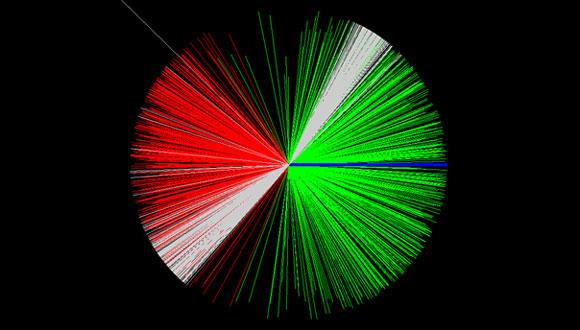Joint Seminar in Nuclear Physics
Zoom: https://us02web.zoom.us/j/85269781234?pwd=YlRoRjNscXV2WTNxV2dTeVh6SHhiZz09
Program:
14:00 - 15:00 - "'How to study the residual strong interaction among hyperons and nucleons at the LHC", Laura Fabbietti, Technical University Munich
Abstract:
Hadrons interact via a residual strong force that is unmeasured for most hadron species.
The measurement and quantitative understanding of the strong interaction among hadrons is considered to be one of the frontiers within the standard model of nuclear and particle physics.
Scattering experiments and spectroscopy studies of stable and unstable nuclei allowed us to quantify the residual nuclear force among nucleons rather precisely, but for unstable hadrons as baryons containing strange quarks (hyperons) such measurements are extremely difficult.
The ALICE collaboration recently demonstrated that by combining excellent particle identification and a momentum correlation analysis method applied to pp and p-Pb collisions at the LHC, it is possible to measure the strong interaction among all hadrons containing strange quarks and protons.
In this talk I will discuss the recent measurements carried out in this sector that allowed us to measure with unprecedented precision the following interactions: K- p, p-Lambda, p-Sigma, p-Xi- an p-Omega-.
The measured correlation functions can be used to test predictions from chiral effective field theory or lattice calculations for different channels and so far unknown features of the strong interaction will be discussed.
These measurements open a new avenue in nuclear physics, with the potential of accessing the strong force between any hadron pair.
Future perspectives for further interaction studies involving strange baryons in Run 3 and the potential extension to 3-body systems will be discussed.
15:00 - 15:30 break
15:30 - 16:30 - "Single and double Λ hypernuclei in baryonic effective field theory", Nir Barnea, The Hebrew University
Abstract:
We address the spectrum of light Λ hypernuclei with S=-1,-2 utilizing baryonic effective field theory. We demonstrate that the theory overcomes the Λ-hypernuclear `overbinding problem' in light hypernuclei which stands for a 1 - 3 MeV excessive Λ separation energy calculated in Λ5He. We also present predictions for the onset of double Λ binding, and for the continuum spectrum of the A=3 system.


